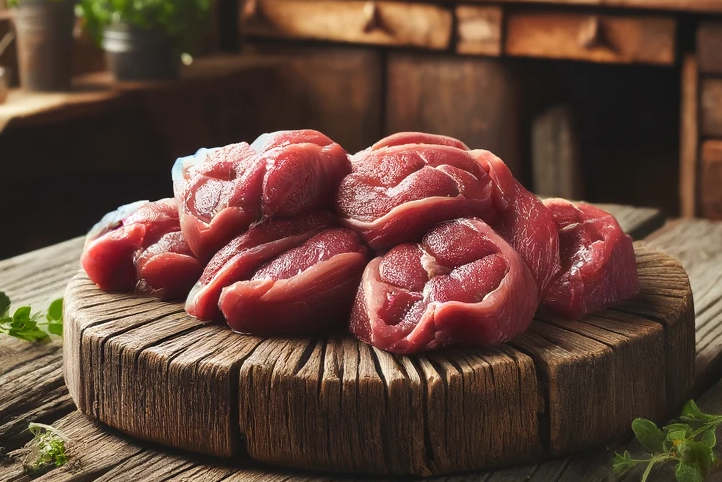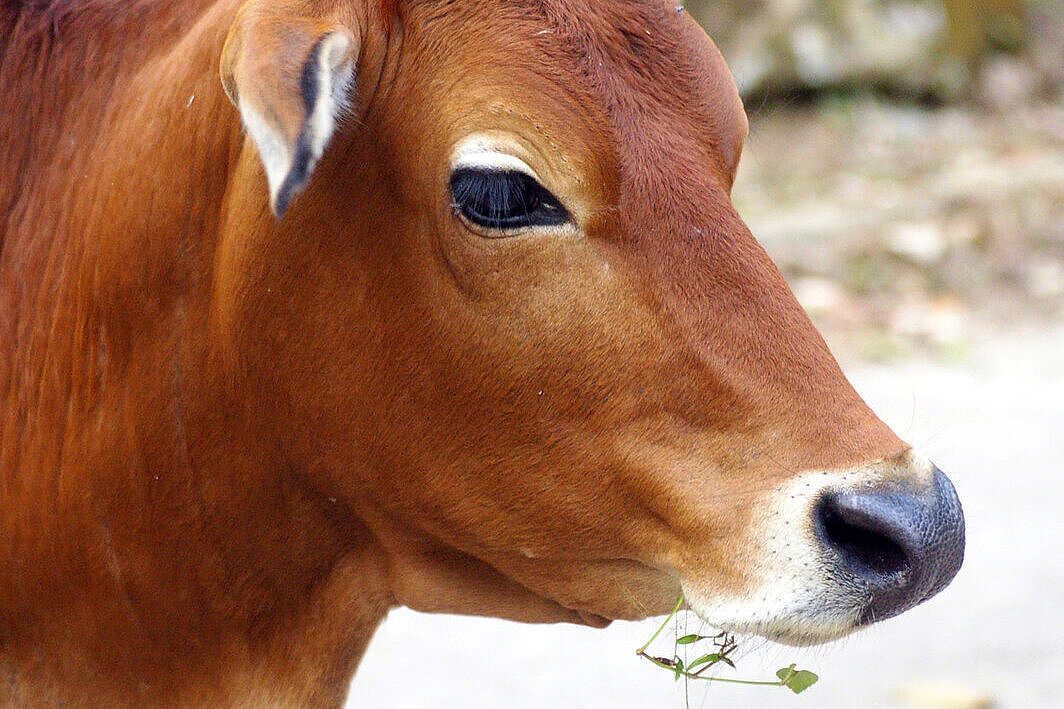Buffalo bake

What are buffalo cheeks?
Buffalo cheeks are, as the name suggests, the meat obtained from the cheeks of a buffalo. This muscle meat is known for its toughness, as it has a high concentration of collagen. During the slow cooking process, the collagen is converted into gelatine, making the meat tender and juicy. For dogs, buffalo cheeks are often offered dried or as part of chews to provide long-lasting activity and chewing pleasure.
Benefits of buffalo cheeks for dogs
Rich in protein
Buffalo cheeks are an excellent source of protein, helping to support muscle growth, body tissue repair and overall dog health. Protein is an essential building block in every dog's diet.
Healthy teeth and gums
Chewing on buffalo cheeks can contribute to dental health by helping to reduce plaque and tartar. The mechanical cleaning action of chewing promotes healthy gums and can reduce bad breath.
Long lasting activity
For dogs that like to chew, buffalo chews provide long-lasting activity that contributes to mental stimulation and can reduce behavioral problems such as boredom or anxiety.
Hypoallergenic properties
For dogs with food allergies or sensitivities, buffalo meat can be a good alternative to more common protein sources such as chicken or beef.
Disadvantages and risks
Choking hazard
As with any hard chew, there is a risk of pieces breaking off and being swallowed, which can lead to choking or intestinal blockages. It is important to supervise dogs when chewing.
Varying quality
The quality of buffalo cheeks can vary greatly depending on the source and processing method. Some products may contain additives or preservatives that are not ideal for dogs.
Digestive problems
Although rare, some dogs can be sensitive to buffalo meat, which can lead to digestive problems such as diarrhea or vomiting.
Buffalo chews can be a nutritious and fun addition to your dog's diet and chewing pleasure. They offer numerous health benefits, including supporting dental health and providing a high-quality source of protein. However, it is important to carefully check the quality of the product and monitor your dog's chewing to minimize potential risks. With the right care, buffalo chews can provide a safe and welcome change in your dog's chew basket.
Properties 19
Are you looking for other ingredients with a specific property?
Just click on them to find more.
If you notice any signs of hypersensitivity or poisoning in your dog, you should see your vet immediately. We are not a substitute for a vet, but we try to be as accurate as possible. Every dog reacts differently and we recommend you get a second opinion or consult your vet if in doubt.
Stay healthy and take good care of your four-legged friend!😊
Similar to Buffalo bake
Venison cheeks are the muscle areas on the cheeks of a deer. Due to their high connective tissue content, they are considered particularly tasty when cooked slowly. In dog nutrition, however, they...
Veal cheeks are the meat that comes from the cheeks of the calf. This meat is particularly tender and flavorful because it comes from muscles that the animal moves frequently. In human cuisine, veal...
Horse cheeks are the meat obtained from the cheek area of horses. This muscle meat is particularly tender and full of flavor, as the cheek muscles in animals are constantly in motion, just like in...
Beef cheeks are part of the head meat of cattle. They consist of dark red, tender and rather lean meat that is surrounded by a thick skin. Beef cheeks are very muscular and have a high proportion of...



